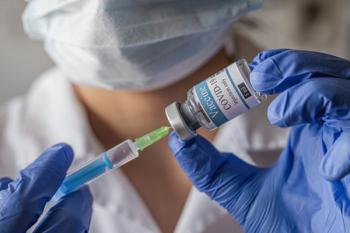
New hypertension definition could boost drug utilization
The American Society of Hypertension's call for a new, broader definition of hypertension could sharply increase the use of drug therapy. Current practice defines hypertension using blood pressure cut points. BP should be reduced below 140/90 for the general population and below 130/80 for patients with diabetes or chronic renal disease.
The American Society of Hypertension's call for a new, broader definition of hypertension could sharply increase the use of drug therapy. Current practice defines hypertension using blood pressure cut points. BP should be reduced below 140/90 for the general population and below 130/80 for patients with diabetes or chronic renal disease.
"Blood pressure, like fever, is more an indicator of other problems than a problem in itself," said ASH president Thomas Giles, M.D., at ASH's annual scientific meeting and exposition in San Francisco. "Most people who have a cardiovascular event have blood pressure below what we consider elevated. Intensive therapy to modify all the markers of hypertension is more effective in reducing morbidity and mortality than reducing blood pressure. You are going to see statins to treat hypertension, drugs used for insulin resistance to treat hypertension, and more."
An ASH draft paper calls for a definition of hypertension based on an individual's total cardiovascular status and overall risk of stroke, myocardial infarct, congestive heart failure, and other cardiovascular events. A new definition should include three elements, Giles said. They are:
ASH's call for a new definition is based on accumulating clinical data showing that BP is only one of many elements contributing to cardiovascular problems. The fatal cardiovascular event risk doubles with every 20/10 increase in blood pressure beyond 115/ 75, Giles noted. Cardiovascular risk also doubles for every 10-year increase in adult age, waist girth over 35 inches, and other factors. Family history and age cannot be altered, but risk factors such as lipid profiles and glucose intolerance can be improved with drug therapy.
Expanding the definition of hypertension is already shifting the course of drug research. With decreased endothelial function as a risk factor, existing drugs that affect the endothelium are being tested against hypertension. Viagra (sildenafil, Pfizer), for one, blocks the breakdown of nitric oxide and other vasodilating substances produced by the endothelium. "We have seen in previous studies that patients suffering from erectile dysfunction and those suffering from coronary artery disease both share a common defect: endothelial dysfunction," said Charalambos Vlachopoulos, M.D., professor of cardiology at the Athens Medical School in Greece.
In a double-blind placebo crossover study, Vlachopoulos' group found 100 mg of Viagra daily produced a significant decrease in arterial stiffness after one week, with arterial function measured by pulse-wave velocity. "The drug has a beneficial long-term effect on aortic stiffness, a risk factor for isolated systolic hypertension, heart attack, stroke, and coronary artery disease," Vlachopoulos said. "We are on the cusp of discovering new beneficial effects extending beyond the drug's acute action."
Other trials bolstered the idea that combination therapy can be more effective than single-drug therapy:
Said Elijah Saunders, M.D., professor of medicine, cardiology, and hypertension, University of Maryland School of Medicine, "A more aggressive approach can take us from one-third of patients controlled to more than 75% controlled. Complementary therapy gives a better control rate than even high-dose monotherapy." He said that while Avalide is not indicated for first-line therapy, it should at least be considered for first-line use in hard-to-control populations such as diabetics, the elderly, Latinos, African-Americans, and patients with metabolic syndrome.
Newsletter
Pharmacy practice is always changing. Stay ahead of the curve with the Drug Topics newsletter and get the latest drug information, industry trends, and patient care tips.



























































































































































